Kawasaki Japan Tour
Good Times with the jolly green giant
Perhaps you have a pal who has a lot of disposable income and the toys to prove it, and you’re lucky enough to enjoy an invitation to a luxurious summer home or a day tearing around in a Porsche.
Well, imagine if a friend invited you on a trip halfway around the world to ride a selection of bikes around a private racetrack and to see a multi-billion-dollar manufacturing facility.
Here at MO, we’re fortunate to be buddies with Kawasaki, a player on the world’s stage to an extent even us brilliant MOrons couldn’t even fathom before seeing it all. To prove it, Big K jetted us across the globe to its home turf in Japan, and we were astounded at the scale of what we saw.
I’ve been fortunate to have seen the production facilities of a couple OEMs (Ducati and Aprilia), and getting an inside look at where motorcycles are built is a treat for moto-heads. But a tour of Kawasaki is different. Not only did we see hundreds of bikes in the midst of production, we also got to see the construction of 180-mph bullet trains and 100,000-horsepower ship engines! Take that, Honda and Harley!
To see the breadth and the scale of all Kawasaki is involved in was a fascinating, eye-opening experience. Come along for the ride as we get an extraordinary glimpse inside the inner workings of one of Japan’s most successful companies.
Much has been made over the years about the founder of Honda, Soichiro Honda. But the namesake of Kawasaki, Shozo Kawasaki, has an equally outstanding history in his homeland of Japan. The business he founded in the late 1800s now comprises 100 different companies under its broad umbrella. It employs nearly 29,000 employees and pulls in more than $11 billion in annual revenue. Below is a timeline chronicling its progress.
1837: Shozo Kawasaki is born.
1864: At 27 years old, Kawasaki begins a shipping business in Osaka that eventually fell apart after his cargo ship sunk in a storm.
1878: Kawasaki Tsukiji Shipyard is founded in Tokyo.
1889: Shozo Kawasaki launched a line of soft drinks called Nunobiki Soda.
1896: Kawasaki Dockyard Co. was established, with Kojiro Matsukata, a Yale-educated businessman, becoming president.
1906: Rail-car operations begun, led by Matsukata.
1912: Shozo Kawasaki dies.
1918: Aircraft division launched, later becoming Kawasaki Aircraft in 1937.
1919: Matsukata ends a national labor dispute by proposing the eight-hour workday he observed while in Europe and America.
1936: Kawasaki Hospital was built to manage health care for company employees.
1943: A gas turbine jet engine is developed for aircraft.
1953: Motorcycle engine production begins with the KE-1, a 148cc OHV 4-stroke Single.
1955: The Meihatsu 125-500 motorcycle debuts.
1960: A factory dedicated to motorcycle production is completed.
1961: Kawasaki Motorcycles Sales established. Kawasaki-Pet M-5 motorcycle debuts.
1962: The 125 B8, Kawi’s first proprietary motorcycle is built.
1964: The high-speed Series 0 Shinkansen bullet train debuts.
1966: The parallel-Twin 650cc W1 emerges.
1969: Kawasaki Heavy Industries is created by combining Kawasaki’s aircraft, rolling stock (rail) and shipbuilding operations.
1969: The 500cc two-stroke H1 and the first Japanese robot debut.
1973: The vaunted four-cylinder Z1 and innovative Jet Ski are first seen.
1974: An assembly plant in Lincoln, Nebraska opens in response to U.S. demand.
1976: The Jet Ski 400 becomes the first mass-production PWC to enter service.
1978: The six-cylinder KZ1300 monster emerges.
1981: The three-wheel ATV KLT200 enters production, the largest displacement ATV on the market.
1983: The GPz900 debuts as the first “Ninja.”
1984: Kawasaki develops and manufactures ATVs in Nebraska.
1985: The Ninja 600 kicks off the 600cc sportbike class. The KLF185 is Kawi’s first four-wheel ATV.
1988: The four-wheeled Mule UTV hits the market.
1990: The ZX-11 becomes the new sportbike king of speed.
1996: Production of Kawasaki motorcycles passes the 10,000,000 mark.
The first stop in our tour was at Kawasaki Good Times World, part of the Kobe Maritime Museum complex in Kobe, Japan. It was the perfect introduction to understand the far-ranging extent of the Kawi juggernaut. We’re all aware of Kawasaki’s powersports products, and that segment of Kawasaki Heavy Industries is the largest part of KHI’s operations. However, the consumer powersports division accounts for just 28% of conglomerate’s business. Here are a few quick facts about KHI you might not know.
- The aerospace division (which builds space station components, turbine blades for aircraft engines, etc.) is KHI’s second-largest division, accounting for 16.5% of its business.
- Was involved with the tunnel-boring machines used to construct the 31-mile “Chunnel” that runs under the English Channel.
- Kawasaki’s subsidiaries also build robots, biomass powerplants and gas turbines.
- Kawasaki once manufactured automobiles.
- Many of Japan’s famous bullet trains, or Shinkansen, are built by Kawasaki.
On our way to the Akashi Works factory where Kawasaki motorcycles are built, our travels took us over Akashi Bay on the impressive Akashi-Kaikyo Bridge. At 2.43 miles long and with a central span of 1.24 miles, it’s the longest suspension bridge in the world. In comparison, there is only 0.80 mile between the main towers of the Golden Gate Bridge.
'The Kawi tower is about 930 feet tall and weighs a massive 25,000 tons.'
Kawasaki, the makers of Ninjas and Vulcans, played a surprisingly integral role in the A-K bridge construction, using its long history of bridge erection that began way back in 1924. Opened in 1998, the bridge is anchored by two huge support towers. To speed up the build, Kawasaki constructed one and Mitsubishi the other. The Kawi tower is about 930 feet tall and weighs a massive 25,000 tons. Kawasaki also manufactured and installed the bridge’s support trusses.
The bridge is an amazing feat of engineering that cost nearly $5 billion. It’s built to withstand 200-mph winds and earthquake hits of up to 8.5 on the Richter scale, aided by 20 tuned mass dampers (pendulums) designed to quell forces. During a day’s change in temperature, the bridge can expand up to 7 feet! Each tower anchorage required 350,000 metric tons of concrete.
Akashi Works
Our next tour stop was the factory in which most of Kawasaki’s familiar motorcycles are built. Located on 121 acres in Akashi, the plant consists of 3.7 million square feet of buildings. It is the workspace for about 3,300 total employees, including the Gas Turbine & Machinery Co. and Corporate Technology Division which produces industrial robots and gas-turbine engines for marine and aircraft use. About 2,140 people work in the Consumer Products & Machinery Co. which produces motorcycles.
Akashi Works was formerly an aircraft facility from 1940 that included a runway. The main building, at 85 meters long, is nearly the length of a football field. Like many structures in the area, much of the Akashi Works is constructed of corrugated steel siding. Interestingly, an unexploded bomb from WW2 was found in 2005.
Unlike most workers in the Western world, employees in Japan usually stay with one company throughout their career. They share our 40-hour work week, and they are blessed with three nine-day vacations each year. Winter is the busy season, with temporary workers adding about 20% to the workforce.
There are eight assembly lines for motorcycles on which Kawi builds 50 models of bikes. There is a special area for small-production motorcycles like the Vulcan 2000. At full speed, the factory can crank out 30,000 bikes in a month, 1,000 a day. It operates on the efficient, just-in-time setup in which it is supplied with only one day’s worth of parts stock.
Along the production lines, we saw several bikes being built, including the Z750, Concours-14, Z1000, Versys, Vulcans and KX dirt bikes. We also saw robotic welding of frames and raw ZX-14 and ZX-6R frames prior to the powder-coating process. It takes about 1.5 hours to complete a bike once its engine has been built. A rolling road dyno at the end of the assembly line (including a front-wheel roller so brakes can be checked) makes sure the bikes are ready for public consumption.
Akashi Works also has a separate area for building engines that range from 65cc to 2000cc. About 420 employees, 100 of them women, toil fastidiously assembling the myriad of intricate parts that make up a powerplant. It was fascinating to see Kawasaki-made robots working tirelessly at milling and measuring engine cases for the motorcycles we ride. Up to 40 engines an hour can be built on one assembly line, and there are three available. Complicating matters somewhat is that the engines have to be made to comply with emissions regulations in three markets: U.S./Canada; Europe/Australia; Asia.
Another part of Akashi Works, which we didn’t see firsthand, is for building engines of other kinds. Many of the Boeing and Airbus aircraft we fly on are powered by engines built at Kawasaki. In addition, Team K is a big player in gas turbines for motive power and energy generation.
The final stop at Akashi Works was at the Motorcycle Collection Hall, an area not open to the general public. It’s the place where many of Kawasaki’s illustrious racing machines are stored, as well as historic production motorcycles. It consists of 175 bikes total, and about 50 bikes are on display. The collection is worthy of a museum.
The Tour Continues…
Believe it or not, there is much more to show and tell you about Kawasaki’s far-reaching operations. Ever see a 300-kph aluminum train being built? Did you know Kawi builds submarines? Wouldn’t it be great to ride on a private Formula-One-spec racetrack? We’ll bring you all this and more in the second installment of this two-part series. Stay tuned for dozens more pictures and a video in our globe-hopping adventure!
More by Kevin Duke



























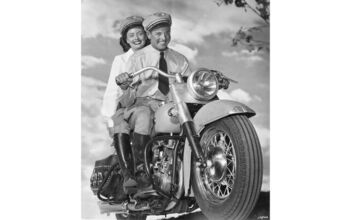
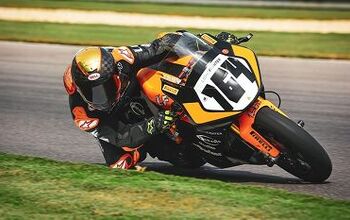


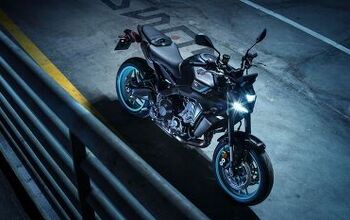

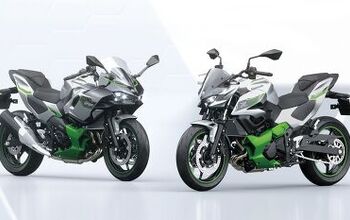

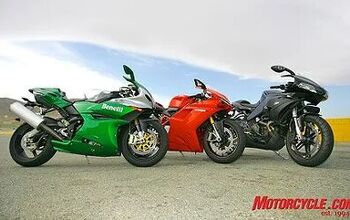

Comments
Join the conversation